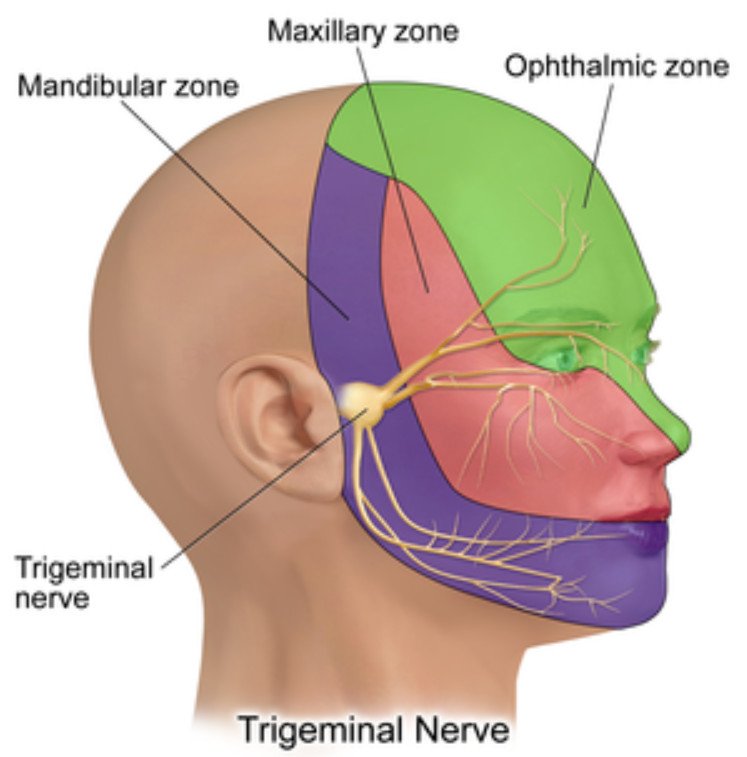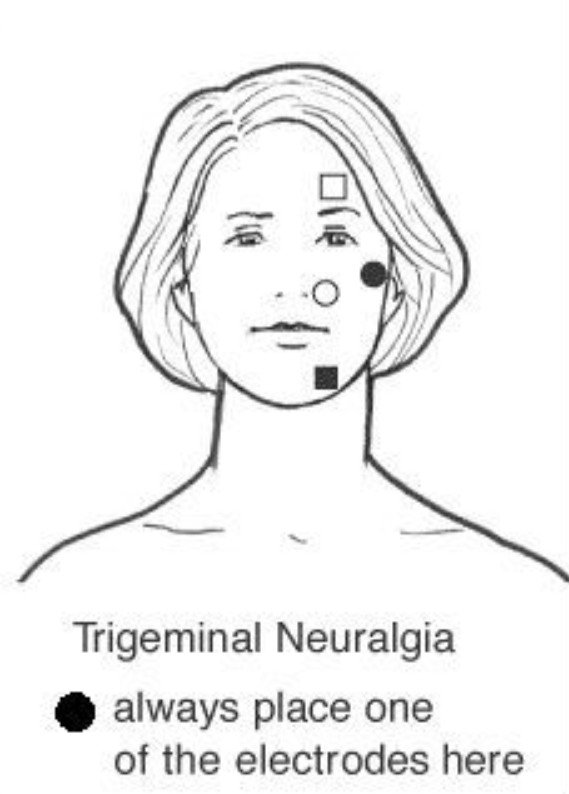TENS Treatment for Trigeminal Neuralgia: A Non-Invasive Approach to Facial Pain
Trigeminal neuralgia (TN), often dubbed “suicide disease” due to its excruciating intensity, is a chronic pain condition affecting the trigeminal nerve, which carries sensation from the face to the brain. Characterized by sudden, severe, shock-like facial pain, typically triggered by mundane activities like chewing, talking, or even a light breeze, TN significantly impacts quality of life. While conventional treatments often involve medication and, in some cases, surgery, Transcutaneous Electrical Nerve Stimulation (TENS) has emerged as a promising non-invasive, drug-free option for managing this debilitating pain. This detailed article explores TENS treatment for trigeminal neuralgia, covering its indications, optimal electrode placement, mechanism of action, frequency, duration, expected results, and potential side effects.
What is TENS?
TENS utilizes a small, battery-operated device that delivers low-voltage electrical currents through adhesive electrodes placed on the skin. These electrical impulses are designed to stimulate nerve fibers, aiming to disrupt pain signals or activate the body’s natural pain-relieving mechanisms.
Indications for TENS in Trigeminal Neuralgia
TENS is typically considered for individuals experiencing pain associated with trigeminal neuralgia, particularly when:
- Medication side effects are problematic: Many first-line medications for TN, such as carbamazepine, can have significant side effects. TENS offers an alternative or adjunctive therapy.
- Medications are not fully effective: For patients with refractory or partially responsive TN, TENS can provide additional pain relief.
- Patients seek a non-pharmacological approach: TENS is a drug-free option, appealing to those who prefer to avoid or reduce medication.
- During acute exacerbations: TENS can be used for immediate pain relief during severe flare-ups.
- As a bridge to other treatments: It can provide relief while awaiting or recovering from other procedures.
It’s crucial to understand that TENS is a symptomatic treatment and does not cure the underlying cause of trigeminal neuralgia (e.g., nerve compression by a blood vessel). It should be used under the guidance of a healthcare professional as part of a comprehensive pain management plan.
Site of Electrode Applications for Trigeminal Neuralgia
Precise and careful electrode placement is paramount for effective TENS therapy in trigeminal neuralgia due to the sensitive nature of the face and the specific nerve distribution. The goal is to place electrodes along the affected branch(es) of the trigeminal nerve. The trigeminal nerve has three main branches:
- Ophthalmic (V1): Affects the forehead, eye, and upper part of the nose.
- Maxillary (V2): Affects the upper jaw, cheek, upper lip, and gums.
- Mandibular (V3): Affects the lower jaw, lower lip, gums, and some parts of the ear.
General Guidelines for Electrode Placement:
- Follow the pain pathway: Place electrodes along the distribution of the affected trigeminal nerve branch. For example:
- V2 (Maxillary branch) pain: Electrodes can be placed near the infraorbital foramen (below the eye, near the nose) and along the upper lip/cheek area.
- V3 (Mandibular branch) pain: Electrodes can be placed near the mental foramen (on the chin) and along the jawline or temporomandibular joint (TMJ) area.
- Just anterior to the ear: A common placement for TN involves placing one electrode just anterior to the ear on the affected side, near where the trigeminal ganglion is located.
- On either side of the painful area: For localized pain, place electrodes on either side of the most intense pain spot, ensuring they are not directly on or near the eye or mouth.
- Bipolar placement: Typically, two electrodes are used per channel, with one acting as the active electrode and the other as the dispersive electrode.
- Smaller electrodes: Due to the small and contoured nature of the face, smaller TENS electrodes (e.g., 1-inch round or square) are often preferred for more precise placement.
Crucial Safety Considerations for Facial Placement:
- Avoid eyes and mouth: NEVER place electrodes directly on or around the eyes or mouth, as this can cause discomfort, muscle spasms, or potential harm.
- Avoid the carotid sinus: Do not place electrodes on the front or sides of the neck, particularly over the carotid sinus, as this can affect blood pressure and heart rate.
- Clean and dry skin: Ensure the skin is clean, dry, and free of lotions or oils for optimal adhesion and electrical conduction.
- Low intensity initially: Always start with very low intensity and gradually increase to a comfortable sensation, given the facial sensitivity.
- Monitor for skin irritation: The facial skin is delicate, so regularly check for redness or irritation.


Mechanism of Action
The pain-relieving mechanisms of TENS for trigeminal neuralgia are thought to be similar to its action in other neuropathic pain conditions:
- Gate Control Theory: The most widely accepted theory. TENS delivers non-painful electrical impulses that preferentially stimulate large-diameter, fast-conducting nerve fibers (A-beta fibers). These A-beta fibers transmit signals to the spinal cord and brainstem (where the trigeminal nerve relays signals) faster than the smaller, slower-conducting pain fibers (C-fibers and A-delta fibers). This faster transmission “closes a gate” in the pain pathway, effectively blocking or reducing the transmission of painful signals to the brain, thereby diminishing the perception of pain. This mechanism is primarily associated with high-frequency TENS.
- Endogenous Opioid Release: TENS, especially at lower frequencies and higher intensities (often producing muscle twitching), is believed to stimulate the body’s natural production and release of endorphins, enkephalins, and other opioid-like substances. These endogenous opioids act on pain receptors in the central nervous system, leading to an analgesic effect that can persist even after the TENS unit is turned off.
In trigeminal neuralgia, TENS aims to both directly interfere with the overactive pain signals transmitted by the trigeminal nerve and to activate the body’s natural pain-modulating systems, offering symptomatic relief from the characteristic lancinating pain.
Frequency and Duration of Treatment
Optimizing TENS parameters for trigeminal neuralgia is often done on an individual basis, but general guidelines exist:
- Frequency (Hz):
- High-frequency TENS (Conventional TENS): Typically 80-120 Hz, with a narrow pulse width (e.g., 50-100 µs). This setting produces a strong but comfortable tingling sensation without muscle contraction. It is often preferred for TN due to the sensitivity of facial muscles and is believed to primarily engage the gate control theory for immediate relief.
- Low-frequency TENS (Acupuncture-like TENS): Typically 1-10 Hz, with a wider pulse width (e.g., 150-250 µs). While effective for some neuropathic pains by stimulating endorphin release, the muscle twitching it causes might be uncomfortable or even trigger attacks in TN patients. Therefore, it is used with caution, if at all, for facial pain.
- Burst Mode: Some units offer burst modes that may be more tolerable and effective for neuropathic pain, combining benefits of both high and low frequencies.
- Intensity (Amplitude): For trigeminal neuralgia, the intensity should be set to a level that produces a strong but comfortable tingling, buzzing, or tapping sensation. It is absolutely crucial that the sensation is never painful or causes uncomfortable muscle contractions. Given the facial sensitivity, start with the lowest possible intensity and gradually increase it until you find a level that provides relief without discomfort.
Duration: The duration of TENS treatment for trigeminal neuralgia can vary:
- Acute pain episodes: TENS can be applied for 20-60 minutes per session, several times a day, as needed to abort or reduce the severity of pain attacks.
- Chronic management: For ongoing pain, sessions can be longer, typically 30-90 minutes per session, 2-3 times a day. Some studies have indicated that consistent use over several weeks (e.g., 3 weeks of 30-minute daily sessions) can provide sustained relief.
- Patients often use TENS for as long as they perceive benefit. The pain relief can last for a period after the unit is turned off.
Results
Research on TENS for trigeminal neuralgia, while not as extensive as for other pain conditions, shows promising results:
- Significant Pain Reduction: Studies have demonstrated that TENS can lead to a significant reduction in pain intensity for patients with trigeminal neuralgia, as measured by visual analogue scales (VAS). Some patients report substantial pain relief, leading to a decrease in the frequency and severity of their attacks.
- Improved Quality of Life: By alleviating pain, TENS can help improve daily activities that are often severely impacted by TN, such as eating, talking, sleeping, and personal hygiene (washing face, brushing teeth).
- Reduced Medication Needs: In some cases, TENS has allowed patients to reduce their dosage of anti-epileptic drugs, potentially mitigating their side effects.
- Non-Invasive and Safe: TENS is an attractive option due to its non-invasive nature and generally favorable safety profile.
However, the response to TENS can be individual, and not all patients may experience the same level of relief. TENS is most often used as an adjunctive therapy, complementing other treatments.
Side Effects and Precautions
TENS is generally considered safe for use when applied correctly. However, due to the sensitive nature of facial application, particular attention must be paid to potential side effects:
- Skin irritation: The most common side effect is skin redness, itching (pruritus), or a rash beneath the adhesive electrodes. This is more likely with prolonged use, sensitive skin, or inadequate skin preparation. Using hypoallergenic pads, rotating electrode placement, and ensuring clean, dry skin can help.
- Uncomfortable sensations: Some individuals may find the tingling, buzzing, or prickling sensation to be unpleasant or even trigger their pain if the intensity is too high or placement is incorrect. Adjusting parameters is key.
- Muscle twitching/spasm: While sometimes desired in other body areas, facial muscle twitching can be uncomfortable or trigger TN attacks. This is why high-frequency TENS (which causes less muscle contraction) is often preferred for the face.
- Burns: In rare cases, if the intensity is set excessively high, electrodes are faulty, or there is poor skin contact, mild electrical burns can occur. Always ensure the sensation is strong but comfortable.
- Headaches or dizziness: Less common, but have been reported.
Absolute Contraindications and Critical Precautions (especially for facial application):
- Pacemaker or other implanted electrical devices: TENS can interfere with the function of these devices.
- Epilepsy: Applying electrodes to the head or neck of individuals with epilepsy may trigger seizures. This is a significant concern for TN patients, and TENS should be used with extreme caution and only under strict medical supervision.
- Pregnancy: Avoid using TENS during pregnancy unless specifically advised by a doctor.
- Heart conditions: Use with caution and under medical supervision, especially avoiding electrode placement across the chest or near the heart.
- Cancer: Avoid placing electrodes directly over known or suspected malignant tumors.
- Numb, irritated, broken, or infected skin: Never place electrodes on these areas.
- Directly on or near the eyes: This is a major contraindication due to potential for eye injury.
- Directly on or near the mouth/mucous membranes: Can cause severe discomfort and potential muscle spasm.
- Front or sides of the neck (carotid sinus): Can affect blood pressure and heart rate.
- Driving or operating machinery: Do not use TENS during activities where sudden muscle twitching or distraction could be dangerous.
Conclusion
Transcutaneous Electrical Nerve Stimulation (TENS) offers a promising, non-invasive, and drug-free option for managing the severe pain of trigeminal neuralgia. By carefully selecting the appropriate parameters, ensuring precise electrode placement along the affected nerve branches on the face, and understanding its proposed mechanisms of action, many individuals can find significant relief from their pain. While it provides symptomatic relief and does not address the underlying pathology, TENS can significantly improve quality of life and potentially reduce reliance on medication. However, due to the unique sensitivity of the face and the serious nature of trigeminal neuralgia, it is absolutely essential to use TENS under the direct guidance and supervision of a qualified healthcare professional who can determine its suitability and provide personalized instructions for safe and effective application.
